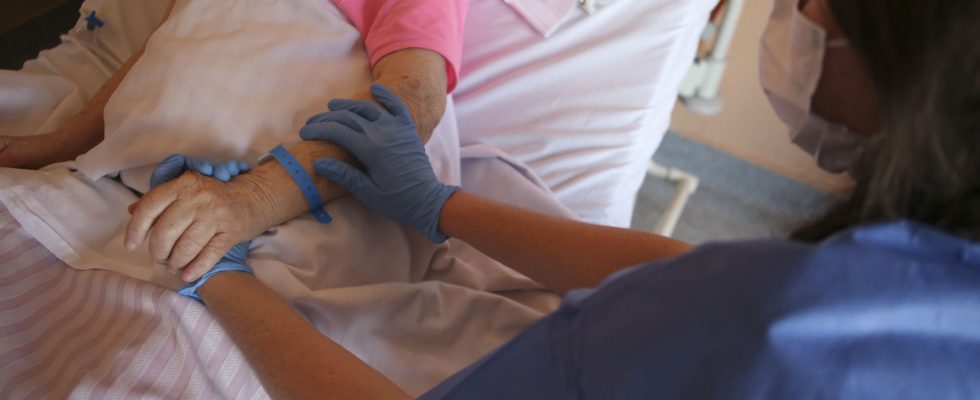Every time I come back to France, where I spend about half my time these days, I’m always surprised by the endless variety of nonsense that the alternative scene in this country manages to invent. After osteopathy and sophrology, “specialties” much appreciated by the French but almost unknown abroad, the latest fad seems to be “percutaneous hydrotomy”.
This treatment, invented some forty years ago by the French doctor Bernard Guez, has recently come into the limelight, after nurses, and perhaps soon doctors, were punished for having practiced it on patients. The “International Society of Hydrotomy” states on its website that “Percutaneous hydrotomy is a professional medical practice. It consists of the local intradermal or subcutaneous injection of saline (0.9% sodium chloride) This technique […] allows the supply of minerals, trace elements and injectable vitamins but also the administration of drugs in accordance with their established use in mesotherapy. Percutaneous hydrotomy is a diluted mesotherapy.”
Neuraltherapy and mesotherapy
Percutaneous hydrotomy is not the same as sterile water injections, an effective means of pain control that prevents pain signals from reaching the brain. This practice is available in several variants, with injection depths generally between 4 and 10 millimeters and a variable injected volume of 5 to 750 milliliters. Its therapeutic claims prove to be extremely varied and range from pain control to detoxification, from rejuvenation to immune stimulation.
If this all seems confusing to you, a few explanations may help. To better understand percutaneous hydrotomy, we must look at its origins: “neuraltherapy” and mesotherapy. Neural therapy was invented in 1925 by German physician Ferdinand Huneke. According to him, injecting a small dose of local anesthetic in specific places would generate instant health effects. These places, reflex or interference zones which Huneke called “Stoerfelder” (zones of disturbance), were according to him “manifestations of cell membrane instability” and triggers of “abnormal responses of the autonomic nervous system”.
No scientific study
These areas of interference may be in scars, autonomic nodes, teeth, internal organs, or other places of local tissue irritation. The causes of these phenomena can be infections, emotional trauma, physical trauma, surgery, accidents, deep cuts, biopsies, childbirth, dental procedures, vaccinations, burns, tattoos, etc. Proponents of neural therapy claim to be able to treat all symptoms related to bodily functions controlled by the autonomic nervous system. There are very few studies on neural therapy. An analysis of the available data concluded that “neither the basis, nor the individual mechanisms, nor the therapeutic efficacy have been the subject of scientific study”.
French physician Michel Pistor, who developed mesotherapy in the early 1950s, was clearly inspired by neural therapy. The treatment also involves injecting substances into the patient’s skin. Originally it was used to relieve pain, but was soon touted as a “universal remedy”. The goal is to deliver drugs into the middle layer of the skin, the mesoderm. This technique is believed to correct underlying issues such as poor circulation and inflammation. Many drugs can be used in mesotherapy, including vasodilators and antibiotics, hormones such as calcitonin and thyroxine, enzymes such as collagenase and hyaluronidase, plant extracts, homeopathic remedies, vitamins and minerals, and even vaccines. The evidence for mesotherapy, however, is not convincing. The most recent study concluded that it may hold promise for musculoskeletal conditions but, due to several caveats, more studies are needed to be sure.
Risk of infections and allergic reactions
Neural therapy, mesotherapy and percutaneous hydrotomy therefore have common roots and characteristics. They are all based on concepts that run counter to science and claim to cure almost all human ailments by injecting substances into the skin. These practices cannot therefore be free of undesirable effects, in particular infections due to poor injection technique or, depending on the substance injected, allergic reactions. More importantly, none of these treatments are backed by solid evidence of their effectiveness. In the case of percutaneous hydrotomy, this deficit is particularly striking. There is not a single rigorous trial that would support its use for any condition. The French Academy of Medicine is of the same opinion and has declared that percutaneous hydrotomy is neither “scientifically based” nor “clinically evaluated”.
In other words, the many claims that are currently being made in France about percutaneous hydrotomy are false. It is therefore not surprising that healthcare professionals who use percutaneous hydrotomy can have problems. Recently, twelve nurses were sanctioned for having used this therapy, and fifty-two doctors will also have to answer for their actions in June. Among them, the inventor of the treatment, who is accused of malpractice. The Council of the National Order of Nurses is invited to warn all nurses against this practice by asking them to “immediately cease all participation in this practice in any form whatsoever”.
